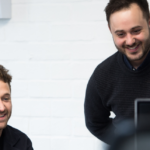 What are the keys to a successful live experience? Should it be big – or clever – or both? Is it best as a shared experience – or an experience shared?
What are the keys to a successful live experience? Should it be big – or clever – or both? Is it best as a shared experience – or an experience shared?
Marketers are investing in live experiences to engage consumers as well as internal stakeholders, making events and meetings with impact becoming central parts of marketing strategies.
The changing face of live experiences
We’re seeing a shift towards consumers and employees demanding experiences to enhance their lives, and the role of events in marketing reflects this. Case in point: we’ve just created over ten high-profile events in Q1. Events and experiential marketing have evolved, especially among the emerging young adults and those embarking on their careers. Consumer needs are changing; we’re entering an experience economy that’s driven by doing rather than buying.
And people want to share their experiences because it’s a reflection of who they are as they establish their place in this world. More and more we’re seeing brands wanting to do events just to be shared and viewed online – but there’s a big difference between sharing an experience in person and sharing an experience online. Brands are less preoccupied with the people in the room but increasingly concerned with the shareability and the potential mass online audience. This has created two types of events: those that lots of people go to and the ones that nobody goes to but everyone sees.
This presents a balance issue for event professionals: getting people to the event (in the ‘real-world’) and the much south-after post-event online activity? The solve in my experience is getting our creative and technical teams to create a concept and content that’s so compelling that attendees want to share an event. You can’t force shareability. An experience has to be authentic enough that people respond to it positively.
The role of tech
Technology is central to live events, the reason being, brands are choosing to do large-scale amplification projects and using the most exciting technology to set them apart. But tech should never lead an event: the creative / concept should smack attendees in the face first. Technology makes the magic happen at live experiences.
I have said it before: there’s an increase in tech for tech’s sake when it comes to events and within experiential campaigns. Clients have even approached us telling us what tech they want to use, wanting it shoe-horned in. It’s great people know what’s out there, but it’s more valuable for clients to brief us with creative they want to see, and the concepts they envisage for live experiences.
Take virtual reality (VR), if it’s used well, it’s incredibly powerful, but poor usage has left a bad taste in the mouths of many simply because it’s been an add-on or a gimmick without proper application. The same goes for other developments in software and technology.
Ultimately, what makes an event work is creativity, production, and the brand’s pull. Not technology. It enhances it. Live experiences make a lasting impact through creativity, get that right, and the rest will follow.
- MRF Unveils Latest MAPS® Data - 20th February 2025
- The BRC announces changes to the board and updates for 2025 - 17th December 2024
- Top 50 DSTV TV programmes – October 2024 - 12th November 2024





